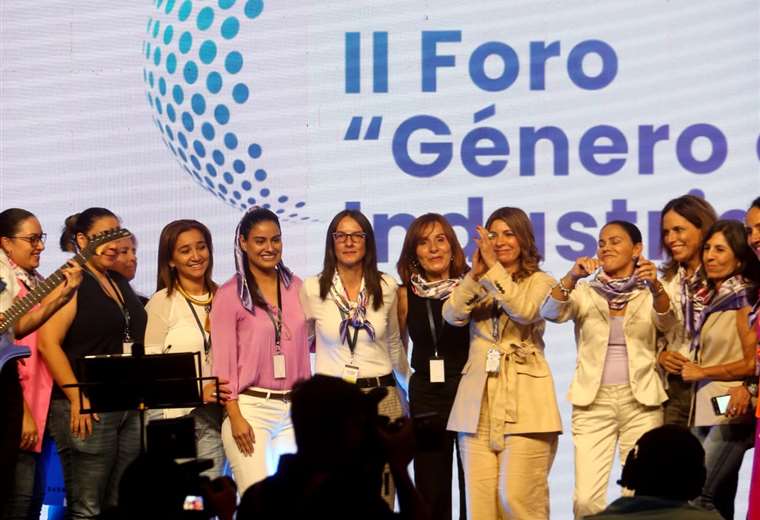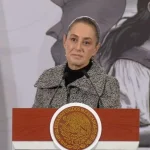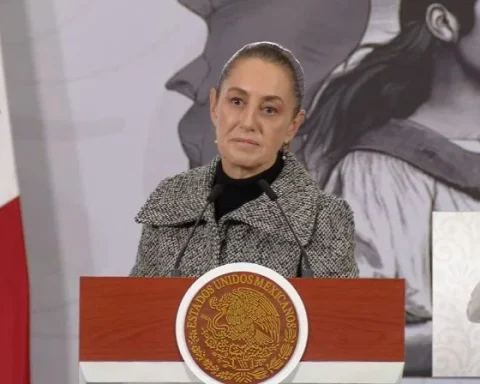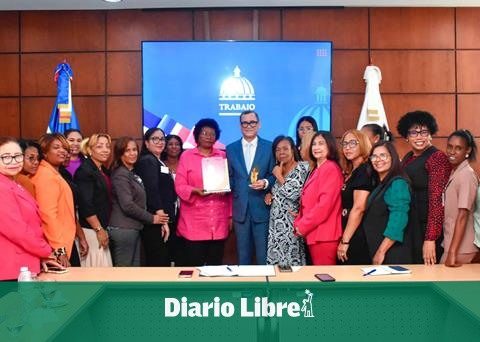February 14, 2023, 5:00 AM
February 14, 2023, 5:00 AM
Within the framework of the celebration of the two years of creation of the Iguales Foundation, the Second International Gender and Industry Forum was held at the Convention Center of the Hotel Los Tajibos.
This theme was chosen, since industry is one of the sectors of the economy in which women face the most challenges.
Among the speakers were guests from other countries, from technology experts to successful women in various fields, and representatives of the United Nations Organization for Industrial Development (UNIDI), Bolivia Global Compact of the National Chamber of Industry, and others .
All of them analyzed the key aspects that still generate inequality in this sector, with the intention of enhance the closing of gaps and promote the development and growth of the industry in Boliviawith an inclusive gender approach.
“Industry plays a key role in the development of countries, so much so that an industrialized country is synonymous with a developed country. And the industrial development of Bolivia cannot leave women on the sidelines,” reflected Patricia Hurtado, director of Fundación Iguales.
For Hurtado, the lack of women in the sector is costing dearly, not only from an economic point of view, but also from a progress point of view.
He said that gender equality in the industry can be achieved through the “connection” between universities, companies, the public sector, etc. “To close the gender gap, we need everyone’s commitment. High connectivity generates better opportunities to grow together“, said.
One of the guests was Nidya Pesántez, head of UN Women in Bolivia. She recognized that, although there have been advances in terms of gender in recent decades, the effects of the pandemic, poverty and violence against women continue to affect them disproportionately.
Pesántez gave some figures to show the panorama. He said that the Women make up 39% of workers in this sector (industry) globallybut that they are overrepresented in the most precarious jobs, either because of the labor intensity required, or because of the lower wages.
She added that women’s micro and small businesses face difficulties in accessing financing. “They represent 32% of the financing deficitSince it is estimated that the credit needs of 80% of micro, small and medium-sized businesses owned by women are not met, we have a huge universe there that we must support,” she called.
He also cited a study carried out in 56 countries in 2019, which showed that only one in five positions on the board of directors was held by womenthat is, 20%.
“This proportion decreases to 18%, making an average in the sectors of information and communication technologies, and in energy”, he observed.
On this point, and after a historical review, in his presentation The Industrial Revolution 4.0 and the Gender Perspective, the Colombian technologist businessman Elkin Echeverri García, assured that there is abundant historical evidence indicating that technological advances during the industrial revolution led to a reduction in the wage gap between genders, a rejection of child labor, and an increase in life expectancy.
For Echeverri, the fourth industrial revolution put everyone on a level playing fieldsince with just pressing a key on the cell phone you can reach everywhere, which opens the opportunity to change society at a speed of four to five years.
“If we want to speed up the development of our territories, we have to ensure that the women of our society, regardless of the condition in which they are, understand the opportunity that these technologies are available. Imagine when we combine with Artificial Intelligence,” she urged.
The technologist insisted that the challenge for women is to assume this available knowledge to transmit it to the women who come. “The one who wins today is not the strongest, nor the one with the most money, but the one who has knowledge in the age of knowledge. You have to start working on the fifth revolution, using the tools of the fourth, ”he called.
On this point, another speaker, Cecilia Ugaz Estrada, director of the United Nations Industrial Development Organization (UNIDI), opined that this fourth Industrial Revolution could consolidate or worsen gender issues, to the extent that the women continue to be overrepresented in routine or low-skilled jobs in the industrial sector.
“The use of robots or technology based on artificial intelligence can, to some extent, destroy female employment to a greater extent,” he warned.
Ugaz backed up this claim based on some statistics. He said that when it comes to Industry 4.0, the prerequisite is digitization, and “the digital gender gap is significant in terms of skills and access to digital infrastructure.”
He cited a figure, arguing that women are 26% less likely to own a mobile phone than men, even now. And she said that another issue that must be considered is the relative lower presence of women in technical careers (science, technology, engineering and mathematics), which means a limited presence in research and development activities.
“These biases are being corrected, but the tendency of technology is to accentuate, rather than close, gender gaps,” he said.
According to the data handled by Ugaz, it is observed that in sectors with low technological incidence there is usually more employment of women, and to the extent that these sectors progress and become more technical, with added value, less participation is noted. of women in the labor market.
“This is what we call defeminization,” he said, adding that, on the contrary, feminization in the industry occurs in export-oriented sectors that require a lot of labor and are competitive due to low labor costs: textiles, clothing, footwear, food industry and electronics.
“It is often believed that a technologically advanced job is masculine. The other thing that is known is that women tend to be a more docile workforce in the face of working conditions that can be very precarious,” she said.
Also, Ugaz added that the most industrialized countries are the most inclusive of women in terms of technology.
He cited data from the latest global report on the gender gap for 2022. He said that increased the percentage of women employed in leadership roles, from 33% in 2016, to almost 37% in 2022and that “there are positive signs”.
As for the sectors with the highest gender parity, they are non-governmental, with 47%; that of education, with 46%; of personal services, with 45%.
However, he recalled that on the other side is the energy sector, with 20% women in leadership positions; manufacturing or industry, with 19%; and infrastructure, with 16%.
According to Ugaz, various reports suggest that the GDP would increase if gender gaps narrowed, by as much as $12 trillion worldwide.
Pesántez added that this advance in the presence of women in the leadership of the industrial sector, in addition to strengthening gender equity, and making companies more profitable, also makes them more likely to substantially reduce energy and water consumption, and emissions of greenhouse gases.
Lucía Sosa, director of the Global Compact, Red Bolivia, said that more than 15,000 companies worldwide are part of the Global Compact, and to these are added more than 4,000 non-business organizations in 160 countries. All these agents work to meet the fifth goal of UN Sustainable Development, on gender equality.
“We are a big movement and Bolivia is advancing towards this goal,” he said, but acknowledged that there are only 37 companies in the country for now, and invited others to join, as several nationals have already been doing, including pharmaceutical companies and financial entities.
It is going slowly in equity, but there are positive signs in the country
Pablo Camacho García, president of the National Chamber of Industry, who gave the conclusions of the forum, stressed that it is important to highlight
the brilliant women who were able to advance gender equality, and who made their stories known at the Fundación Iguales event.
He recognized that this fight is one of the most difficult tasks, but also honorable. “The industry has to work a lot and the National Chamber of Industry is proud to be the one with the greatest representation of women. For the first time in 92 years, we have a female vice president in the nationaland by
first time in 25 years a president in the Departmental Chamber of Industry of La Paz, those are achievements. Today we are the chamber with the highest participation of women. From speech to practice ”, she assessed.
In the forum there was also a panel with three guests, examples of success in the industry. They were María Antonieta Colamarino, vice president of the Aguaí Cane Producers Union, and with extensive experience in various management positions; María Renée Centellas, CEO and technical director of Laboratorios Bagó.
Lastly, he also shared his testimony Cinthia Aramayo, president of the Chamber of Industry of La Paz, and vice president of the Chamber Industry National. “Opportunities have no gender,” Centellas said of his accomplishments.


















